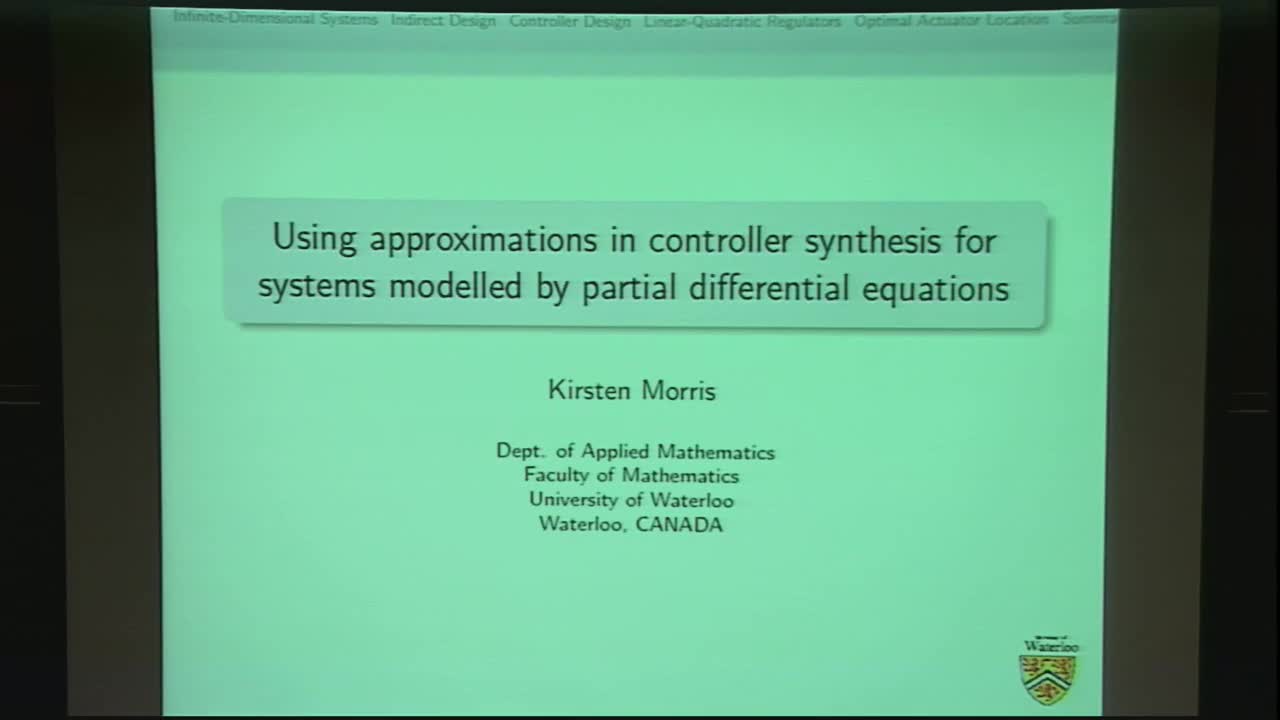Using Approximations in Controller Synthesis for Systems Modelled by Partial Differential Equations
Presenter
February 4, 2016
Keywords:
- Controller Synthesis, Partial Differential Equations
MSC:
- 93B50
Abstract
There are essentially two approaches to controller design for systems modeled by a partial differential equation: direct and indirect. In direct controller design, the original model is used design the controller. In indirect controller design, a finite-dimensional approximation of the system is obtained and controller design is based on this approximation. The chief drawback of direct controller design is that a representation of the solution suitable for calculation is required. For many practical examples, this is not possible and so indirect controller design is generally used in practice. The hope is that the controller designed using the finite-dimensional approximation has the desired effect on the original system. Unfortunately, this is not always the case. Conditions under which the indirect approach to controller design works have been obtained and are presented. The difference between approximation of parabolic and of hyperbolic equations is illustrated by several simple equations.
The performance of controlled partial differential equations depends on the location of controller hardware, the sensors and actuators. The best locations may be different from those chosen based on physical intuition. Furthermore, since it is often difficult to move hardware, and trial-and-error is laborious when there are multiple sensors and actuators, analysis is crucial. Approximations to the governing equations, often of very high order, are required and this complicates not only controller design but also optimization of the hardware locations. Care needs to be taken in formulating the joint optimization/ controller design problem in order to obtain correct results. Numerical issues will be briefly discussed.
